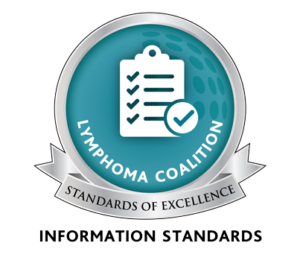It is possible for low-grade, slow-growing, less aggressive lymphoma to become more aggressive. This is known as transformation.
This can happen because the cells in low-grade lymphomas are surviving beyond their natural lifetime and may become damaged over time, similar to a car with high mileage. They become less responsive to treatment and the damage causes the cells to start to grow rapidly, similar to high-grade lymphomas.
Doctors confirm that transformation has occurred when cellular changes have been seen under the microscope and different lymphoma symptoms have been reported. Transformation can become apparent at any time from the point of diagnosis onwards.
Transformation is most common in follicular lymphoma, which can transform into the high-grade lymphoma called diffuse large B-cell lymphoma (DLBCL).
Other low-grade lymphomas that can transform into more aggressive types of lymphoma are:
- Marginal zone lymphomas (including MALT lymphomas)
- Lymphoplasmacytic lymphomas (including Waldenström’s macroglobulinemia)
- Small lymphocytic lymphoma / chronic lymphocytic leukemia (this is called Richter syndrome when it transforms).
These are all non-Hodgkin lymphomas, but transformation can also occur in one of the Hodgkin lymphomas called nodular lymphocyte-predominant Hodgkin lymphoma (which can transform to DLBCL).
Very occasionally, people who start off with a high-grade lymphoma can relapse distantly in the future with a low-grade lymphoma.
Signs that may suggest transformation after a period of slow-growth or stability include:
- An increase in lymph node size
- Swelling of the liver or spleen
- Weight loss, sweats, or fever (also known as ‘B symptoms’)
- Elevated blood levels of lactate dehydrogenase (LDH, a chemical) or calcium
- Biopsy of a lymph node detecting both high- and low-grade lymphoma together
Having one or more of these symptoms does not necessarily mean that you are experiencing a recurrence. It is important to keep this in mind, especially since it is natural to be sensitized or on high alert for recurrence. It is best to discuss any concerns that you may have with your doctor as he or she is the best person to determine whether further testing is required. If your doctor believes it is best to investigate your symptoms, much like when you were first diagnosed, your doctor will order blood tests, imaging studies, and biopsies to learn as much as possible about the transformation.
Your treatment will depend on the type of lymphoma you have, the treatments you have had in the past and how you responded to them, and your overall health.
Generally, transformation is treated with a more aggressive treatment aimed at the high-grade lymphoma component so that both the low-grade and high-grade forms are treated effectively.
References:
Lymphoma Association. Understanding transformation – a guide for people with lymphoma





